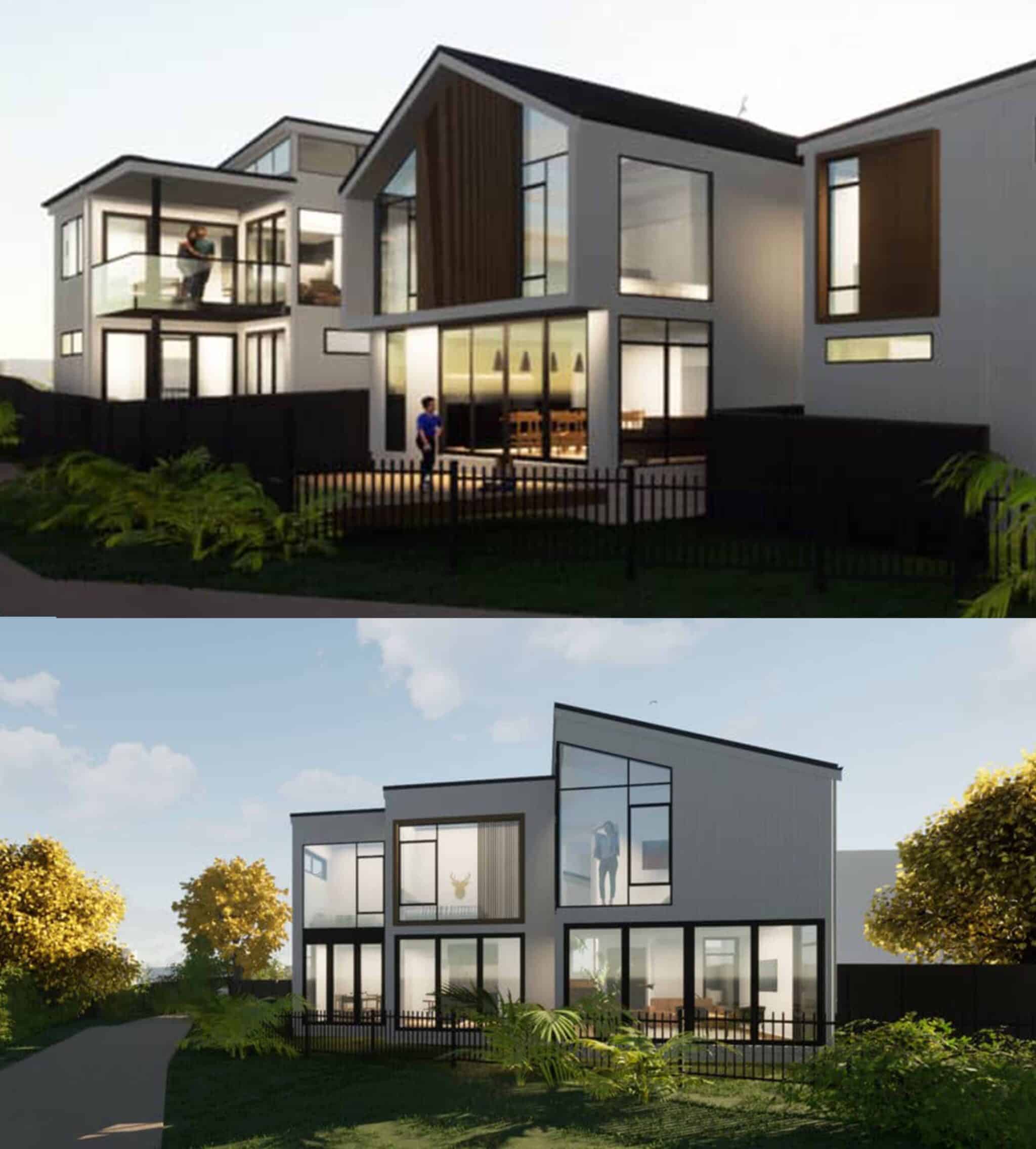Architecture combines a whole range of disciplines, from the purely artistic to the highly scientific, and is subject to the fickle forces of fashion and economics, which play a huge role in determining both how much something will cost to build and what its market value will be once it is complete.
But how does an architect create value?
Advertisers condition us to believe that good value only means the lowest price. However, life experience teaches us that the lowest price usually comes with the lowest quality. For a building, that means frequent maintenance, shorter life span, shoddy finishing, mismatched materials, unresolved details, dim spaces, draughtiness, dampness or just plain bad design. You get a much lower value than if you had just paid a bit more. Put another way, it costs you in the long run through higher running costs, shorter life-span and lower enjoyment.
Whether we’re designing for an owner who is building their dream home or the future buyer of a developer, we have to keep in mind that – if we do our job well – what we design will stand much longer than we will. Our end users are not just the client in front of us but also future generations whose needs will evolve and change. So, to create long-term value, we mustn’t wrap the design of a building too tightly around the immediate needs of one person or group.
An architect’s job is to turn our client’s land and financial resources into something more valuable. For a developer, that means profit to invest in your next project. Building for yourself means a home for your family, business, or community that fits your needs and provides a great place to live your life. In any case, that value is created through good design that meets our functional needs of warmth, shelter, light and air, and our emotional needs of privacy, places to connect, and spaces that delight and uplift the soul.
Understanding sustainable architecture and the important role it can play.

The industrial and technological revolutions have changed our world more rapidly than any other period in human history. They have improved living standards and life expectancy but have also caused climate change. We have seen an alarming increase in extreme weather events and have all been affected by their devastating consequences. There’s no escape from the fact that our environment is changing rapidly and will continue to do so. To care for future generations, how we build must minimise our ongoing contribution to climate change and respond to the effects we already see.
Architects have a lead role to play in reducing the construction industry’s environmental impact through climate-sensitive design and can respond to climate change in three ways: the first is to “touch the earth lightly”. A light touch means selecting materials and products that minimise environmental impact and avoiding disruption to local ecosystems. The second is to minimise a building’s use of resources over its lifetime through energy efficiency, resource collection and recycling, and using durable materials to minimise the need for refurbishment. Both approaches are highly quantifiable responses that can be measured through tools such as Greenstar or Homestar.
The third response to climate change is simply to make great architecture. Our throwaway culture creates vast waste mountains filled with disposable diapers, plastic packaging and fast fashion. The effect of using “green” materials is drastically diminished when the building is prematurely demolished because it is impractical, leaky, cramped, or simply ugly. Those architectural icons that have lasted centuries have done so because they have been loved. And they’ve been loved because they are great pieces of design.

Great architecture flourishes when it’s part of a community and economy, when people can meet their physical and spiritual needs. Great architecture works when it fits into the context of a well-considered built environment with good infrastructure, places to learn, play, and work, places to meet, entertain, and care for those in need. That kind of context doesn’t happen by accident: it needs the coordinated work of many people to achieve. We can contribute to a sustainable future by creating ecosystems for people that are durable and energy efficient, but above all they must be beautiful, and they must be great places to live, because then they will be loved, and then they can last for many generations to come.
Architecture is not the only solution to climate change, but it can be part of it. It has to be done in conjunction with dreamers, and scientists, and politicians, and thinkers, as well as planners, and engineers, and surveyors, and ecologists.
From the big ideas to the small details, a good architect makes sure your money is well spent. And a design that will last for many generations to come? That’s pretty good value.
Learn more about our architectural services
Cato Bolam offers comprehensive architectural services for residential, commercial, and industrial projects, delivering your design from concept to completion. Our design philosophy focuses on creating assets that hold their value long-term.
About the author: Rowan Murray, an Associate and Architecture Principal at Cato Bolam, brings a wealth of expertise to architecture. With experience in NZ and the UK ranging from sheds to mansions, Rowan is deeply committed to crafting designs that meet today’s needs and endure for generations. His passion for quality and sustainable design shines through in his work, reflecting a forward-thinking approach that resonates with clients and communities alike.


